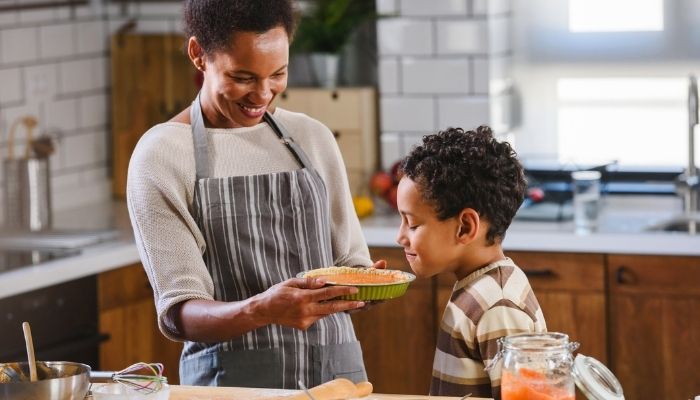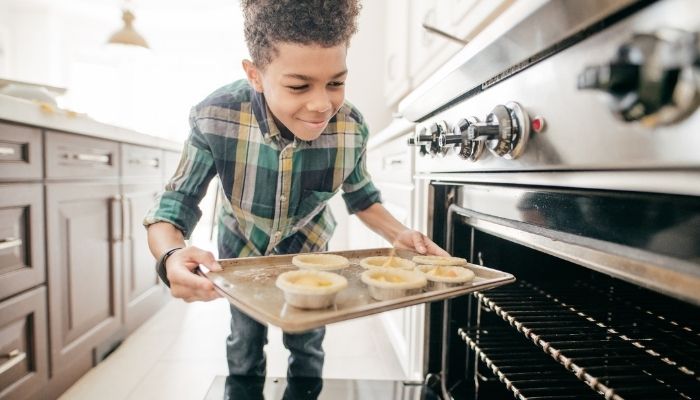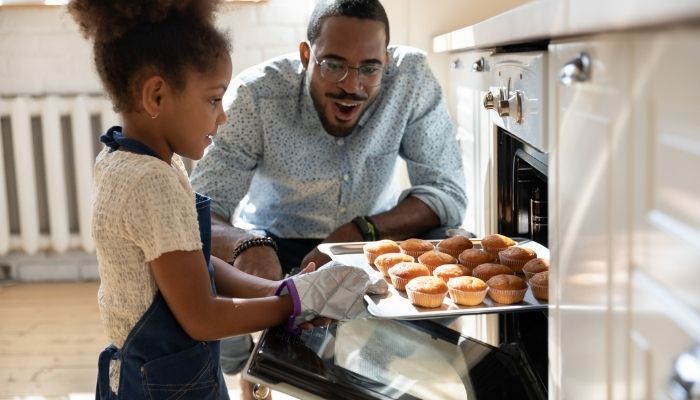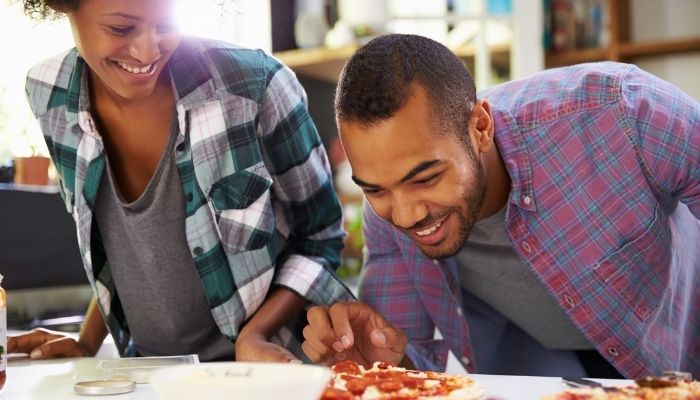Regardless of your culinary level or cooking experience, we've all been in a predicament where we can't figure out what height to adjust the oven racks. The answer to that question is in the oven’s design and how heat is distributed. It might sound like a lot, but don’t worry, we’re going to break it down for you.

While you'll only need to leave your racks at the middle rack most of the time, certain cooking situations benefit from adjusting your oven rack height. The reason being most ovens contain two heat sources: one at the bottom and one at the top. The top of the oven tends to be steadily hotter due to the fact that hot air rises. On the other hand, the lower heating element heats in bursts, so it can get hotter and then cool as you cook. This is because, while both elements heat up when we preheat the oven, the bottom element is the one that will periodically kick in to maintain the core temperature once it has reached the desired temp. Here’s how to know when you need to switch your racks up.
Top Rack

With the top rack or upper third rack, you want to use that for any dish that needs rich browning on the top, like casseroles, broiled dishes, or anything covered in cheese. You just have to keep a closer eye on them to prevent burning due to the amount of heat at the top. The top rack can also come in clutch when you’re baking two sheets of cookies at the same time, keep one sheet in the middle of the oven and the other at the top, then flip the sheets halfway through cooking.
Middle Rack

The middle rack is essentially the default position. It’s a good rule of thumb to stick with the middle whenever you have doubts about food placement in the oven. The middle rack is ideal for most foods since it allows for even circulation of heat. It’s a great choice for turkey, one-dish baked goods, sheet-pan meals, muffins, and brownies. Another tip, if you're cooking several things at once, save the center rack for fragile dishes that could burn easily, such as pies and pastries. More forgiving dishes should be moved to the top and bottom of the oven, then rotated halfway through the cooking period to ensure equal cooking.
Bottom Rack

The bottom or middle third rack is the spot for dishes that need crispy bottoms. The total baking time will be the same as if baked in the middle, but the proximity of the pan or baking sheet to the heating element will encourage browning on the bottom. Which makes this rack position perfect for pizzas, bread, and even fruit pies.
These rules do switch just a tad to account for oven type, more so for convection ovens. Unlike a conventional oven, a convection oven comes equipped with a fan. This contributes and aids to heat regulation and disbursement. With a convection oven, you most likely will have a quicker cook time. So, say you needed to use the broiler to give a dish nice browning, you will want to shorten the cooking time and take a peek at shorter intervals with a convection oven. But don’t let that intimidate you, just remember to stick with the middle rack if you have doubts. That’s the one tip that goes both ways, no matter the oven type. And never move the racks while the oven is hot; try to do it beforehand.
Not sure what oven you need? Or do you just have more questions? Don’t worry, here at are experts are always here to help! Send us a chat, give us a call or visit our store today!